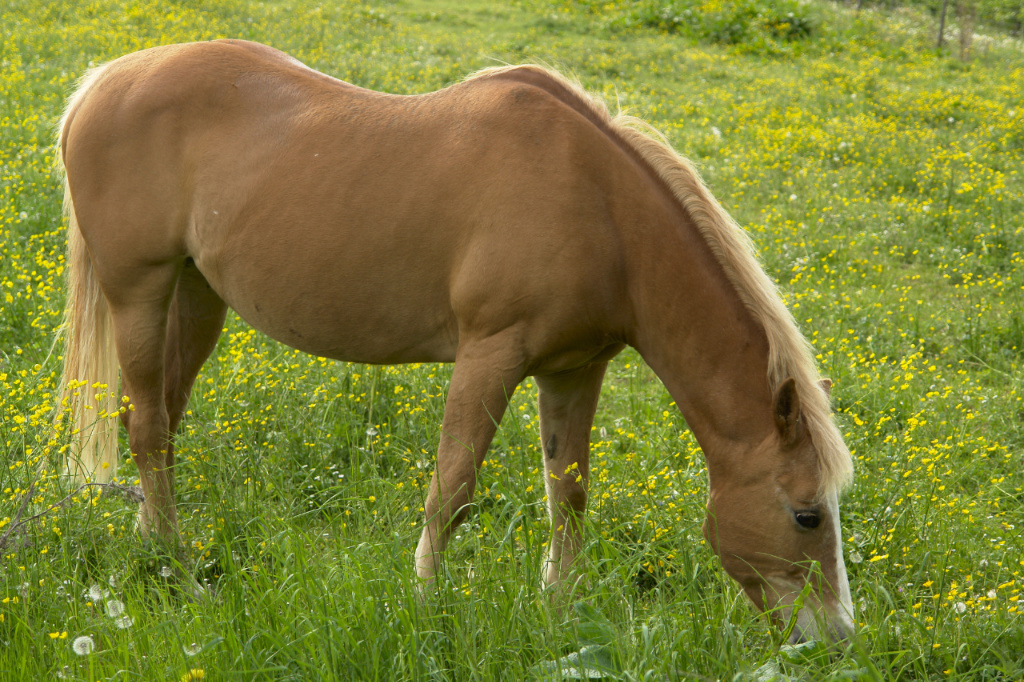By Dr. Lydia F. Gray, posted September 2022
When people think of laminitis, they probably think of a pony that was turned out onto lush spring grass too quickly. Experts now know that’s a very specific – and important -- kind of laminitis so they’ve given it a special name: pasture-associated laminitis or PAL. Because there are several teams of veterinarians and research scientists around the world studying laminitis and they’re still figuring things out, there are a couple of other names in use:
Endocrinopathic Laminitis or EL
pronounced “in-doe-crin-oe-PATH-ick”)
“endocrine” means hormones, and “pathic” means caused by
Hyperinsulinemia-Associated Laminitis or HAL
pronounced “high-per-inn-sull-inn-EE-me-uh”
“hyper” means too high, “insulin” is a hormone, and “emia” means in-the-blood
Don’t be intimidated by these long, hard-to-pronounce names! They all just mean “metabolic” laminitis. When researchers all over the world are working on the same problem separately, they tend to use Latin. This way, when they communicate with each other or publish papers, they’re talking apples to apples. Getting the terminology right, and getting it into mainstream use, is all part of the battle.
Some experts combine all three names into one: Pasture and Endocrinopathy-Associated Laminitis (PEAL). They do this to make it clear that pasture -- plus a disorder of the endocrine (hormone) system -- is what leads to laminitis in the vast majority of cases. In fact, PEAL is thought to be responsible for 90% of all laminitis cases in horses.

Approximately 10% of laminitis is due to another broad category: a bacterial infection or bacterial overgrowth somewhere in the body. Some vets call this Sepsis-Associated Laminitis while others call it Systemic Inflammatory Response Syndrome or SIRS. The bottom line is that toxins released from bacteria trigger an exaggerated inflammatory response from the body and together this causes damage to the lamina.
Examples of laminitis from this category include:
Grain overload
Severe diarrhea or colitis (i.e. inflammation of the colon)
Uterine infection from not passing the afterbirth, aka retained placenta
Complications from pneumonia
Toxins including black walnut, hoary alyssum, and endotoxin from fescue
Body-wide (systemic) sickness such as Strangles, Potomac Horse Fever, Lyme Disease
There is a third cause of laminitis, but it’s very rare. Some people call it Supporting-Limb Laminitis and others call it Standing-Limb Laminitis, but it occurs when one leg takes more weight temporarily because of a lameness or injury and that extra weight damages the lamina. “Road Founder” would fall in this category, as would other things that disturb the natural movement and structure of the hoof, such as a club foot or the opposite, a long toe/low heel.
Read the third article in the Laminitis series – “What do Sugars and Starches Have to do with Laminitis?” – and learn about the role of simple carbohydrates in this condition. Read the first article in the series – “What is Laminitis in Horses?”.
